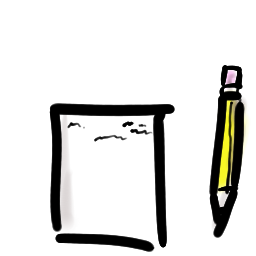
What if there was a method that could not only explicitly teach students core writing skills, but simultaneously deepen their domain-specific knowledge?
Turns out there is: it’s called the Hochman method.
I’d heard about Judith Hochman’s writing method for some time, but only finally got the opportunity to attend a workshop last month. In case you haven’t heard about the Hochman writing method, you can read more about it’s impact in Peg Tyre’s 2012 article in the Atlantic, and get an overview of the method on it’s website.
In a nutshell, Hochman’s method is a systematic, explicit approach to equipping students with the ability to recognize and construct clear and complex sentences, only then moving on to constructing paragraphs, and from there to composition. The vast majority of teachers (such as myself) go straight to composition, then use generalized rubrics that provide little specific guidance on revising for grammar and mechanics.
Students are thus passed on from grade to grade with little instruction on constructing well-written, fluent, grammatically accurate sentences beyond vague comments such as, “Make sure to reread your sentences out loud to check for grammar.”
But there’s even a deeper potential impact of Hochman’s method: it reinforces content knowledge in tandem to building writing knowledge and ability.
In a former post on ideas from cognitive psychologist Daniel Willingham, we explored just how critical–yet how very rare–it is to have a school-wide, systematic curriculum that reinforces knowledge coherently and sequentially across classrooms.
Furthermore, we know from research that one of the most powerful levers for building and reinforcing knowledge is “low-stakes quizzing.” When used to interleave and distribute practice across time, this is a highly effective form of transferring information into long-term memory.
Like many of the findings from the realm of cognitive science, this all sounds great in isolation, but when you try to translate it to a school and a classroom, it gets significantly more sticky, especially in a subject like ELA. Many things we cover don’t fit neatly into a multiple choice quiz.
And many teachers are highly allergic to anything that smells like a standardized test. And even when they aren’t, developing a well-designed and valid multiple choice question is surprisingly intensive.
Here’s where Hochman’s method comes in. Her method provides explicit and clear sentence construction activities that can be applied to any content and that can be used to assess comprehension of texts or topics. This sentence-level work serves the same function, in other words, that low-stakes quizzing would, while also explicitly teaching writing skills.
So imagine this: a school creates an initiative, after being trained in Hochman’s methods, to embed sentence-level activities into every text that is read in social studies, science, and ELA. These activities would serve as formative assessments of content. And once those activities for each text are developed, a resource packet is made that can be used again and again in the future, whether or not a teacher leaves the building. That’s an endeavor that could not only be high impact but furthermore sustainable.
For an example of one of Hochman’s sentence-level activities (Because, But, So), check out Doug Lemov’s post, Hochman’s ‘But, Because, So’ Sentence Expansion Activity. He also highlights Hochman’s distinction between editing and revision here.
Have you used or seen the Hochman method? Do share.

Reblogged this on Pensive about Chemistry Education and commented:
I am new to this but intend to read more -thank you.
LikeLike